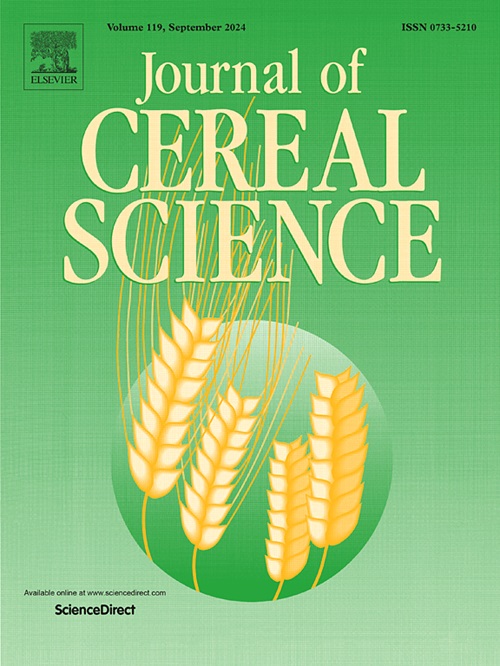Redistribution and introduction of heavy metals during wheat milling: A process-based study
IF 3.7
2区 农林科学
Q2 FOOD SCIENCE & TECHNOLOGY
引用次数: 0
Abstract
Heavy metal contamination in food products poses a significant threat to global food safety and public health. In this study, the impact of wheat milling processes on the concentrations of ten heavy metals, including aluminium (Al), arsenic (As), cadmium (Cd), chrome (Cr), cobalt (Co), copper (Cu), iron (Fe), lead (Pb), nickel (Ni), and zinc (Zn) was determined across 43 milling streams. The assessment was conducted across key processing stages, including intake, pre-cleaning, cleaning, and tempering, as well as the subsequent milling phases of breaking, reduction, and crushing. Wheat samples were analyzed for nine metals (Al, Cd, Cr, Co, Cu, Fe, Pb, Ni, and Zn) using Inductively Coupled Plasma Optical Emission Spectrometry (ICP-OES), while As was determined by Atomic Absorption Spectrometry (AAS). No As was detected in both raw wheat samples or any stage of milling stages, indicating no associated contamination risk. Coarse fractions, such as bran and germ, contained higher levels of heavy metals, particularly Al and Zn, while refined flour fractions exhibited significantly lower concentrations due to the removal of outer grain layers. Al levels decreased from 13.63 mg/kg in raw wheat to 0.36 mg/kg in refined flour. Cd, which was not detected in earlier stages, appeared at 0.58 mg/kg during crushing, indicating potential metal transfer caused by mechanical abrasion. These findings highlight the role of milling in reducing heavy metal content and underscore the need for strict control of external sources and regular equipment maintenance to ensure the safety of wheat-based products.

小麦加工过程中重金属的再分配和引入:一项基于过程的研究
食品中的重金属污染对全球食品安全和公众健康构成重大威胁。在这项研究中,小麦碾磨过程对10种重金属浓度的影响,包括铝(Al)、砷(As)、镉(Cd)、铬(Cr)、钴(Co)、铜(Cu)、铁(Fe)、铅(Pb)、镍(Ni)和锌(Zn)。评估是在关键的加工阶段进行的,包括进料、预清洗、清洗和回火,以及随后的破碎、还原和破碎的研磨阶段。采用电感耦合等离子体发射光谱法(ICP-OES)测定小麦样品中Al、Cd、Cr、Co、Cu、Fe、Pb、Ni、Zn等9种金属,原子吸收光谱法(AAS)测定砷的含量。在生小麦样品或任何碾磨阶段均未检测到砷,表明没有相关的污染风险。粗馏分,如麸皮和胚芽,含有较高水平的重金属,特别是Al和Zn,而精制面粉馏分由于去除了外层颗粒层,其浓度明显较低。铝含量从生小麦的13.63 mg/kg降至精制面粉的0.36 mg/kg。早期未检测到的Cd在破碎过程中出现在0.58 mg/kg,表明机械磨损可能导致金属转移。这些发现强调了碾磨在减少重金属含量方面的作用,并强调需要严格控制外部来源和定期维护设备,以确保小麦产品的安全。
本文章由计算机程序翻译,如有差异,请以英文原文为准。
求助全文
约1分钟内获得全文
求助全文
来源期刊

Journal of Cereal Science
工程技术-食品科技
CiteScore
7.80
自引率
2.60%
发文量
163
审稿时长
38 days
期刊介绍:
The Journal of Cereal Science was established in 1983 to provide an International forum for the publication of original research papers of high standing covering all aspects of cereal science related to the functional and nutritional quality of cereal grains (true cereals - members of the Poaceae family and starchy pseudocereals - members of the Amaranthaceae, Chenopodiaceae and Polygonaceae families) and their products, in relation to the cereals used. The journal also publishes concise and critical review articles appraising the status and future directions of specific areas of cereal science and short communications that present news of important advances in research. The journal aims at topicality and at providing comprehensive coverage of progress in the field.
 求助内容:
求助内容: 应助结果提醒方式:
应助结果提醒方式:


